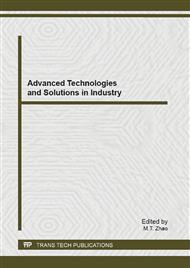[1]
Mo Xiaoping, The study on the East River tributary BOD water quality model parameters based on the laboratory method. The people of Pearl River, 2005, 1:63, 68
Google Scholar
[2]
Qin, X.S., Huang, G.H., Zeng, G.M., Chakma, A., et al, An interval-parameter fuzzy nonlinear optimization model for stream water quality management under uncertainty. European journal of operational research, Vol. 180(3), (2007) pp.1331-1357.
DOI: 10.1016/j.ejor.2006.03.053
Google Scholar
[3]
Jiang, Y., Liu, C., Huang, C., et al, Improved particle swarm algorithm for hydrological parameter optimization. Applied Mathematics and Computation, Vol. 217(7), (2010) pp.3207-3215.
DOI: 10.1016/j.amc.2010.08.053
Google Scholar
[4]
J. Kennedy, R. Eberhart, Particle swarm optimization. In IEEE, Vol. 1944, (1995) pp.1942-1948.
Google Scholar
[5]
R. Poli, J. Kennedy, T. Blackwell. Particle swarm optimization. Swarm intelligence, Vol.1(1), (2007) pp.33-57.
DOI: 10.1007/s11721-007-0002-0
Google Scholar
[6]
Idel Montalvo, Joaqu´ın Izquierdo, Rafael P´Erez, et al, Particle swarm optimization applied to the design of water supply systems. Computers & Mathematics with Applications, Vol.56(3), (2008) pp.769-776.
DOI: 10.1016/j.camwa.2008.02.006
Google Scholar
[7]
Fu G.W., Cheng S.T, Water Pollution Control System. Beijing: Tsinghua University Press, (1985).
Google Scholar
[8]
Zeng G.M, Hong Y.X, Qin X.S, et al, Application of Modified Genetic Algorithm in Parameter Estimation of Water Environmental Model. International Journal HYDRO ELECTRIC ENERGY, Vol.20(1), (2002) pp.38-40.
Google Scholar


